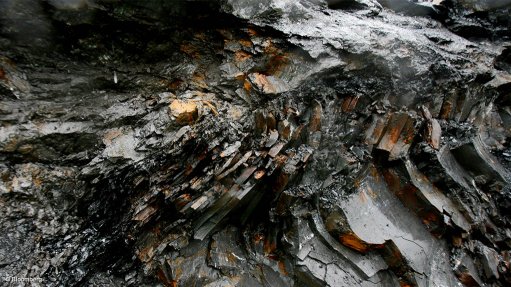
Photo by: Bloomberg
The Nkomati Anthracite mine, in which Unicorn Capital Partners holds a 50.3% interest, plans to produce as much as 40% of South Africa’s anthracite needs in the next three to five years.
It also intends to supply the international market with anthracite.
Unicorn CEO Jacques Badenhorst states that anthracite is the world’s “quintessential rock superstar” because it burns cleaner and hotter than any other coal type.
“Governments today are actively encouraging its use in their private sectors. As a vital component in the production of chemicals, plastics and energy, anthracite has become an indispensable commodity,” he says.
He suggests that, with anthracite’s low levels of sulphur and other impurities, and because it is mostly made up of 70% free carbon, this hard rock should be classed as a carbon product, rather than a coal product.
Anthracite rock’s elevated exposure to intense pressures and temperatures gives it a high energy density, which allows for exceptional heat value. It also accounts for about 1% of the world’s coal reserves, and generally costs two to three times as much as regular coal.
Badenhorst points out that, as the global demand for steel increases, so does the demand for anthracite.
Global demand for metallurgical anthracite in 2016 was estimated at 115-million tons, with the ferrous sector accounting for more than 80%.
By comparison, South Africa’s anthracite demand in 2016 was 2.1-million tons, of which 98% was consumed by nonferrous sectors.
“Until fairly recently it was generally viewed that South Africa has limited commercially viable anthracite resources and that the country has become dependent on imports.
“That seems to now have changed with the successful redevelopment of Nkomati Anthracite,” Badenhorst states.
The Nkomati Anthracite mine, in Mpumpalanga, has a total inferred, indicated and measured reserve of 8.7-million tonnes.
The Mpumalanga Economic Growth Agency holds 33.3% of the mine and the local community 16.1% of the mine.
Badenhorst says Nkomati Anthracite will soon be in a position to deliver a substantial portion of South Africa’s anthracite needs, with the immediate goal to produce 25% of the country’s local demand by the end of this year.
In April, Nkomati started drilling 43 additional exploration holes, which will be completed by the end of June. This should help double the life of the mine, Badenhorst adds.
“When compared with other local mines, Nkomati’s anthracite is of a particularly high grade, owing to its low level of impurities and high levels of fixed carbon – up to 86% and more.
“Currently, Samancor and Glencore are the two main anthracite buyers in South Africa, with Glencore requiring about 70 000 t/m and Samancor 35 000 t/m to 50 000 t/m. In total, there is an estimated local anthracite consumption of 150 000 t/m to 200 000 t/m,” explains Badenhorst.